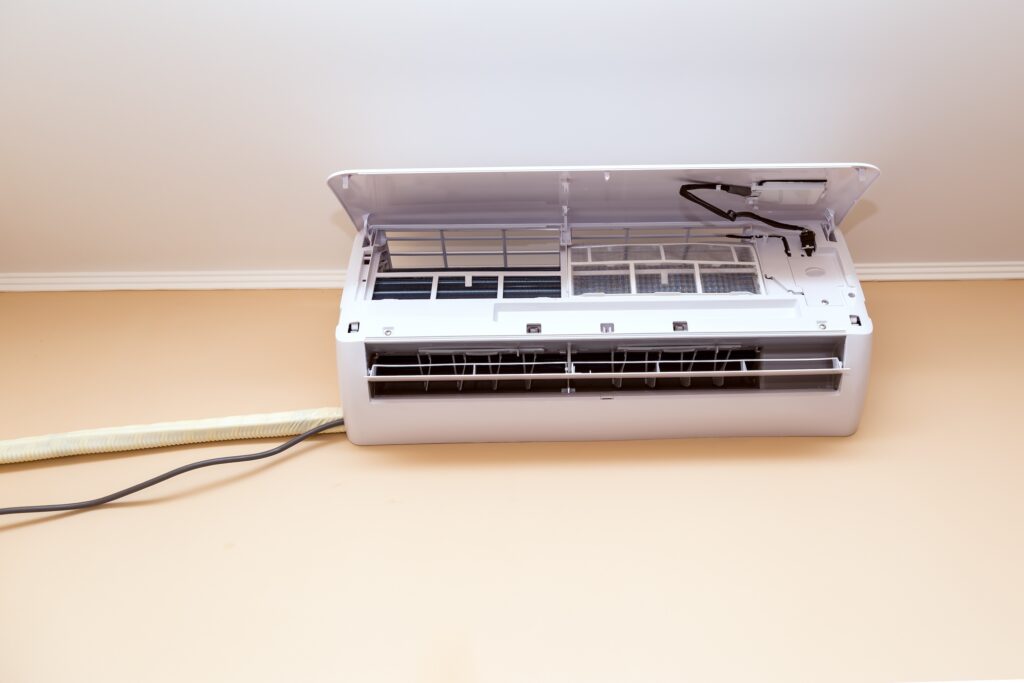What is a Mini-Split, and How Can it Keep My Home Comfortable?


If your house lacks ductwork to attach an air conditioning unit, the easiest and most popular way to heat and cool it is with a mini-split ductless heat pump. This efficient, easily installed, all-electric system is particularly well-suited for specific rooms without requiring ducts or radiators.
A mini-split consists of a wall-mounted unit about the size and shape of a desk drawer that connects to an outdoor compressor, which is generally smaller than an ordinary A/C compressor. Unlike your standard central air conditioning unit, it doesn’t require a duct system and doesn’t heat or cool unused rooms. Unlike a window-mounted unit, mini-splits are quiet and efficient. They don’t need a wall outlet for power and don’t block a window. They also don’t drip on people’s heads passing beneath the window.
Mini-splits are easier to install than central air and often make sense as a replacement or supplement to existing heating and cooling equipment. They offer unmatched flexibility because they can be set up to serve one or several rooms. The wall-mounted units can also be installed above ceilings or on the floor; however, ceiling placement requires a much more complex and expensive installation. The size of the unit depends on each room’s heating and cooling needs, with more temperature management requiring a larger unit.
These systems are perfect for heavily used rooms, like kitchens; rooms unheated and uncooled by an existing HVAC system, like attics and basements; and special rooms that require discreet temperature control, like nurseries, for babies or plants. They are highly customizable, with each wall unit operating as an independent heating and cooling zone. This allows for setting different temperatures in different rooms or turning some units off altogether while others run.

Mini-splits can be controlled using modern methods, such as programmable thermostats and wireless remote controllers. They can also be set up for smartphone control and integrated into a smart speaker system like Alexa. Depending on the desires of the room’s occupants, they can be adjusted to blow in one direction or another.
Using a mini-split to heat a space instead of a typical fossil fuel furnace can reduce total energy use by two-thirds. The cooling mechanism works the same as a standard A/C system. Mini-splits definitively reduce their users’ carbon footprint.
Installing a mini-split system is neither inexpensive nor simple. It requires the expertise of an HVAC professional with experience and integrity. Holley Heating and Air has built its reputation for top-quality work for over 100 years and has installed hundreds of mini-splits. Wirecutter magazine recommends doing your due diligence before choosing an HVAC company for this project. “The commitment you make to an installer will determine how well the mini-split system functions in your space,” they write.
As for cost, the rule of thumb is to expect to pay $4,000-$5,000 per room for a modern, high-tech system.
Is a mini-split system right for you and your home? Or should you opt for a full HVAC unit or a couple of window units? Contact Holley for expert guidance through the decision-making process. We will explain the pros and cons of each type of system so you can make an informed decision.




